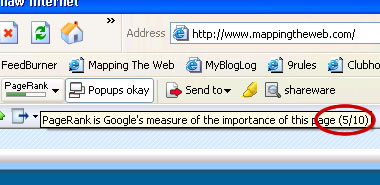SEO Tip #4 - Top 8 SEO Myths
Thursday, January 18th, 2007During my time as an Internet marketing specialist and SEO consultant, I have come across numerous SEO myths that many people believe to be true. This is due to lack of industry knowledge and education.
But it’s time to set the record straight. It’s myth-debunking time…
- You must submit your site to all search engines (and resubmit often): This is probably the most common SEO myth of all. First, let it be known that you don’t need to submit your site to any engines. I never submitted MappingTheWeb.com to any engines, but they still drive considerable traffic to the site. As for resubmitting, this is pointless. Don’t waste your time. All you need to do is acquire some respectable back-links - the higher the Google PageRank, the better. The better the links, the higher your ranking and the more often you get crawled.
- You have to pay to be listed: Scam. Don’t believe it or pay it. To be listed on the big engines like Google, Yahoo, or MSN, you do NOT need to pay. As a recurring scam, many illegitimate ‘SEO professionals’ and SEO submission sites claim that you need to pay an ongoing fee to stay listed with the engines. Once again, this is a big lie. Don’t get suckered in.
- META keywords are important: Hahaha… maybe in 1995. Google doesn’t look at them. They’re on the way out at Yahoo and MSN (if they aren’t already). The concept of tagging in the META tags seems good, but it’s corrupt. Instead focus on the META description and other areas.
- Assured results / rankings: No chance. No web program or SEO specialist can ever guarantee a certain result or ranking. If this is the case, they are lying. Furthermore, some may use a similar tactic thats works as follows: the SEO specialist tells you he will get you on the front page of Google for the term “eastern asian puppy dog bracelets”. That’s great. I’m sure he will. But no-one searches for that term. So although you may appear on the front page for a given term, if no-one is searching for it, all is lost.
- SEO software provides guaranteed results: Give me a break. Search engine optimization should NOT be handled by software or a program. It is a very delicate art that should be performed by a professional. Attaining a necessary balance between technical and marketing cannot be accomplished by software. And as mentioned above, guaranteed results are impossible.
- You should list your site with thousands of search engines: Definitely not. You should focus on a minority of search engines that drive the majority of search traffic. According to Nielsen NetRatings, they estimate that 93% of all November 2006 US search engine traffic comes from 6 sources (Google, Yahoo, MSN, AOL, Ask, and MyWay). It should also be noted that 74% of that traffic is generated by Google and Yahoo alone. Obviously you can submit to the smaller engines to grab some of the long-tail traffic, but your time is better spent focusing on the big guys.
- There is a set way to optimize: Absolutely not. Algorithms change. Web standards and principles are in a dynamic state. The Internet is a perpetual, moving entity. What worked 5 years ago, probably won’t work today. In addition, nobody completely understands the Google algorithm (or Yahoo or MSN). If they did, the information would be priceless and could be leveraged for personal financial gain. Having said that, keeping the system under wraps is important to the integrity of the given engine.
- SEO is all done on the page: Nope. You can optimize your page title, headers, META tags, page URL, paragraph text, ALT tags, blah, blah… all you want. But at the end of the day, it’s only half the battle. You need back-links. This cannot be overstated. Google algorithm is based of back-links, which I like to refer to as ‘votes’ or ‘recommendations’. This altered perspective makes more sense to the amateur SEO artist. In other words, the more back-links, the more people are recommending your site and saying ‘Hey, this is something you should check out’. So go get em.
I hope this article helps to clarify some common misconceptions. Obviously SEO is not an exact science and my advice should be taken with a grain of salt. Nonetheless, debunking these SEO should help many in their conquest to drive glorified search engine traffic.
